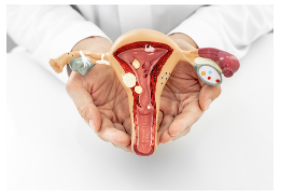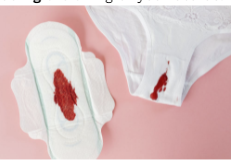The Reproductive System
4 min read•november 29, 2021
Riya Patel
Riya Patel
Biology 🧍
13 resourcesSee Units
Structure of the Male and Female Reproductive Systems
As young children, we're often taught that storks deliver children to different houses. For those of you who are older siblings, you might've been told your younger sibling came into existence this way. 🦆

Remember the movie “Storks”?
GIF courtesy of GIPHY
Welcome to the Reproductive System! .

Image courtesy of Pexels
However, as we grew older, we learned that the male and female reproductive systems work together to produce a baby. A baby is created when an egg cell from a female unites with a sperm cell from a male. There are many organs and hormones within the male and female bodies required for this procreation process to occur. 🧠
The Male Reproductive System
The male reproductive system consists of:
- Testes: also known as testicles, they are oval-shaped glands that make sperm (male sex cells).
- Penis: the primary male reproductive organ where urine and semen pass through.
- Prostate Gland: a gland that makes some of the semen (mostly the fluid).
- Vas Deferens: a pair of ducts that connects the testes to the seminal vesicles; sperm also travels through here
- Seminal Vesicles: a pair of glands that make some of the semen (mostly the fluid).
- Scrotum: a pouch made of skin which holds the testes.
Visual Representation

Image courtesy of Unsplash
The Female Reproductive System
The female reproductive system contains of:
- Vagina: a tube made out of muscle where the sperm cells travel to fertilize the egg cell; the baby passes through this during childbirth.
- Ovaries (2): release one egg cell per month (menstrual cycle).
- Uterus: where the egg cell implants and where the baby grows throughout pregnancy.
- Vulva: surrounds the openings of the vagina and bladder (urethra)
- Fallopian Tubes: two tubes that connect the ovary and uterus; where the egg cell travels through, and where fertilization typically occurs
Visual Representation
Below is a model of what the female reproductive system looks like:

Image courtesy of Unsplash
Hormones
Male Hormones
- Testosterone
- Causes genitalia to develop 😳
- Stimulates sperm production 😳
- Penis enlargement 😳
- Pubic hair growth 😳
- Deepening of voice 😎
- Facial hair growth 😎
- Sex drive 😏
Female Hormones
- Estrogen and Progesterone
- Enlargement of breasts 😳
- Growth of pubic hair 😳
- Onset of menstruation 🗡🩸
- Estrogen ONLY
- Triggers development of secondary sexual characteristics at puberty 💥
- Progesterone ONLY
- Prepares and maintains endometrium for pregnancy 🤰
Menstrual Cycle

Image courtesy of Pexels
Hormones Involved
- FSH: stimulates oocyte (immature egg) development
- LH: matures oocyte and causes release (ovulation)
- Estrogen: develops endometrium (uterus lining)
- Progesterone: maintains endometrium
- HCG: pregnancy hormone 🤰
- Oxytocin: birth hormone; also known as the “feel good” hormone 👶
What's Happening?
- The uterus lining is building up to prepare for pregnancy!
- You also feel a lot of mood swings and might act like this in a whole day: 😂😀😡😢😝.
Why Do You Bleed?
- Because your body is shedding the lining of your uterus!

😩 Why Does This Happen?
- This happens because you are not pregnant. In other words, there's no sperm fertilizing the egg at the time of menstruation. 🤰
Ovulation and Fertilization
Each month, a woman’s ovary will release an egg cell (ovulation) around 14 days after the first menstrual cycle takes place. The egg cells go through the fallopian tube, and this is where they will be fertilized by a sperm cell (deposited by a male). 🙏
During sexual intercourse, the male’s penis will release a white fluid called semen into the woman’s vagina. Semen contains sperm cells. These sperm cells will go through the vagina into the uterus, into the fallopian tubes. All of the sperm cells will surround the egg cell. When one sperm cell goes into the egg cell, they will unite via fertilization. 🤝
Diseases of the Reproductive System

Image courtesy of Pexels
Male Reproductive System
- Testicular Cancer
- Penile Cancer
- Phimosis
- Testicular Torsion
- Erectile Dysfunction
- Priapism
Female Reproductive System
- Ovarian Cancer
- Cervical Cancer
- Endometriosis
- Polycystic Ovarian Syndrome (PCOS)
- Turner Syndrome
- Rett Syndrome
Both Female and Male Reproductive Systems
- Infertility
- Sexually Transmissible Infections (STIs)
- HIV/AIDS
Important Vocabulary
Below are a few terms from this study guide that encompass the reproductive system.
⭐ These are very important to remember! Make sure you write them down somewhere! ⭐
List of Vocabulary
- Egg Cell
- Sperm Cell
- Testes
- Penis
- Prostate Gland
- Vas Deferens
- Seminal Vesicles
- Scrotum
- Vagina
- Ovaries
- Uterus
- Vulva
- Fallopian Tubes
- Testosterone
- Estrogen
- Progesterone
- FSH
- LH
- HCG
- Oxytocin
- Menstrual Cycle
- Ovulation
- Fertilization
Closing Remarks
That’s all there is to know about the reproductive system! Make sure you review the important vocabulary to review everything that you’ve learned in this study guide! Good luck studying!
🤝 Connect with other students studying Biology using Hours!
Browse Study Guides By Unit

© 2023 Fiveable Inc. All rights reserved.